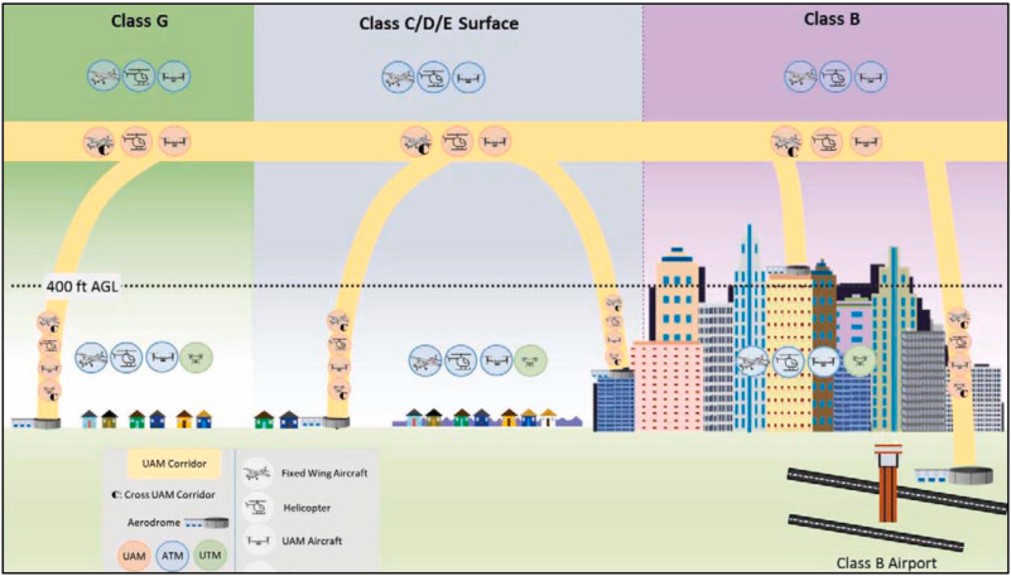Introduction:
Urban Air Mobility is convenient for all future domestic transportation in large cities, because of road traffic congestion, pollution, etc. UAM envisages a future in which advanced technologies and new operational procedures enable practical, cost-effective air travel as an integral mode of transportation in metropolitan areas. It represents one of the most exciting and complex Advanced Air Mobility concepts with highly automated aircraft providing commercial services to the public over densely populated cities.
Problem statement:
Volume of airspace and vertiport facilities will be limited in Urban Air Mobility. UAM Operators need to compete for using these resources. System efficiency will reduce as well as cause delays due to unmanaged excess demand. Apart from the demand related resource constraint, there will be additional constraints due to off nominal situation due to adjunct mobility systems and weather. Existing methodologies for handling aircraft traffic will not be sufficient to handle the forecasted UAM traffic. Collaborative decision making will help to mitigate most of the identified bottlenecks in the UAM. Making these decisions requires a higher level of automation as well as interaction between different stakeholders. There is a need for creating protocols for collaboration and prioritisation for the smooth operations. These protocols involve detection of flight situation, evaluation of the situation and implementation of correction actions.
UTM, UAM and ATM Operating Environments:

Fig. 1: UAM, UTM & UAM shared airspace
The Figure 1. by FAA represents how the UAM, UTM and ATM share airspace with each other. The airspaces of operation are divided into Class G which is the airspace above rural regions, class C/D/E which is the airspace above the periphery of the rural or urban areas. The class B is the airspace above the urban areas that are densely populated and has other adjunct mobility systems in close proximity with each other.
The need for collaborative decision-making system:
There is limited volume of airspace and vertiport facilities for the operation of UAM vehicles hence, operators have to compete for these requirements. Unmanaged demand will suffer from poor efficiency, delays, inability to manage off-nominal situations, ATM and UTM operating together, etc. Existing methodologies for handling aircraft traffic will not be sufficient to handle the forecasted UAM traffic. Therefore, a need for creating protocols for collaboration and prioritization for the smooth operations is required. These protocols support for situational awareness and implementing corrective actions.
Proposed UAM ecosystem architecture:

Fig. 2: Proposed UAM architecture
Figure 2. represents the UAM architecture we are currently working on. This architecture is a cumulative result of literature survey of FAA and NASA UAM documentations. The architecture has many modules that have distinctive operational functionalities and they interact with each other.
People

Manogna Yadav N

Vignesh Ramesh






